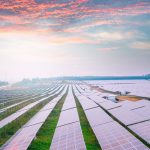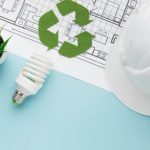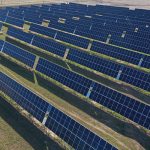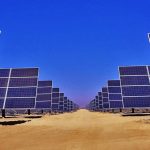Support CleanTechnica’s work through a Substack subscription or on Stripe.
Whether he knows it or not, President Donald J. Trump’s era will be noted for its scaling up of renewable energy. Partially, it’s because many companies have already committed to business plans that incorporate solar installations, wind turbines, and batteries. Businesses must find competitive advantages that point to a winning, scalable formula, and a business defense of clean energy leads to growth performance because renewables are filling in a voracious demand for new sources of energy.
Moreover, discounting “cynics eager to denigrate the achievement,” Nobel Prize-winning economist Paul Krugman stated that “actual experts on energy and the environment are giddy over what has been accomplished.”
And then there’s the date: July 1, 2026. That’s the last day in which, in order to qualify for federal tax incentives created by the Biden administration as part of the Inflation Reduction Act, renewable energy projects must be started.
“I don’t see any reason to believe that renewables won’t double by 2030,” comments Robert Brecha, a senior climate and energy adviser at Climate Analytics, a global climate science and policy institute. He goes on to say in defense of clean energy that the Trump administration can slow its progress, “but they can’t stop it.”
The Nobel Memorial Prize in Economic Sciences was awarded this month to three economists for research that explains the relationship between technological progress and sustained economic growth. That symbiosis has improved living standards, health, and quality of life for people around the world. The prize committee said that the work of these economists would help ensure that growth was maintained and could be steered in the direction to support humankind.
“Technology advances rapidly and affects us all,” the Royal Swedish Academy of Sciences stated, “with new products and production methods replacing old ones in a never-ending cycle.”
Energy innovation is one kind of technological advancement that can enrich human lives. Reasons for embracing renewables abound.
Solar and batteries, which have a much shorter idea-to-implementation time frame than natural gas and nuclear power plants, are dropping in price while gas power plants price tags have risen significantly. Federal tax credits for grid-scale battery storage were not affected by the cuts in the One Big Beautiful Bill, so more developers are switching to building batteries, which are in high demand to help balance the wind and solar projects completed in recent years. The growing market for renewable technologies decreases energy costs, makes energy consumption more efficient, and creates energy independence.
Development of these innovations requires substantial investment. Orders for custom power transformers, solar panels, and other ancillary equipment are on the upswing from larger companies that can afford to sit on equipment until needed in the construction process. Placing such orders is one way to demonstrate to the Internal Revenue Service that a project is underway, as the New York Times reports.
In Defense of Clean Energy: Capacity Additions to US Grids Continue
“This rush is real,” Jennifer Granholm, the energy secretary for President Joseph R. Biden, Jr., confirmed. “You’ll see an uptick in the next two years.” Then again, she admonished Democrats for a lackluster commitment to clean energy during the 2024 elections. “Democrats have to do a better job of speaking to all channels and being fearless about going to places that may not be allies,” she said at Politico’s annual Energy Summit in Washington over the summer.
This year, renewable energy and batteries will make up around 93% of the capacity added to US grids, according to the federal Energy Information Administration.
So many projects are in the implementation stage that the US is projected to add near-record amounts of renewable energy and batteries through 2027.
BloombergNEF recently raised its forecast for how much wind, solar, and batteries the country would add next year by more than 10%.
Why So Many People Fail to See the Need for Climate Action
A lack of awareness of how renewables influence the overall energy landscape, however, continues to hold back the US from fully embracing clean energy. An October 2024 Pew Research Center survey of US residents’ views on climate change revealed that eight-in-ten Americans say climate news makes them feel frustrated about the level of political disagreement on the issue. A large share (73%) also said climate news has made them feel sad about what’s happening to the Earth. At the same time, 51% of US adults admit they’ve felt suspicious of the groups pushing for action on climate change (a view expressed by 75% of Republicans).
Rhetoric against climate change and environmental policy is laden with misinformation, which makes implementing climate policies even more difficult during the “drill, baby, drill” Trump administration. A growing number of Facebook groups, influencers, and various online forums make a living by spreading mis- and disinformation about renewable energy sources like solar, wind, and hydroelectric power.
Battles in defense of clean energy legislation must help the public be more aware of the benefits of renewables. It’s likely for a person or group of people to endorse climate conspiracies if they view climate knowledge as tentative, rely on intuition to understand climate change, and have weaker beliefs in the interconnectedness of climate knowledge and its reliance on experts and scientific sources.
“Clean energy exports is hardware, which once a country has bought it, will generate electricity for a decade or two to come,” Greg Jackson, chief executive officer of Octopus Energy, the UK’s largest energy retailer, told Bloomberg. “Whereas with gas, the day you buy it, you use it, it’s gone forever.”
Global Renewable Energy Adoption Surges
Global records were reached for renewable energy investment in the first half of 2025. The global rise in energy demand is being met and occasionally exceeded by wind and solar power. When electricity output from these sources is greater than demand, it displaces some fossil fuel-generated power in the process, according to a report by Ember, a global energy think tank. The vast majority of the renewable energy projected to go online in the coming years will come from solar, which already has met more than 80% of new global energy demand in 2025.
Zoya Teirstein, writing for Grist, explains that national policies that encourage the development of green technology are part of an equation for ongoing adoption, but so, too, are “astounding drops in the price of solar power—primarily driven by Chinese manufacturers, which build more than 80% of the world’s solar energy components.”
The International Energy Agency (IEA) projects that the quantity of installed renewable power—meaning the maximum amount of energy that can be produced by systems like solar fields, hydroelectric dams, and wind turbines—will more than double by the end of this decade.
Nations such as the UK, Germany, and Chile have already reduced their need for imported coal and gas by around a third since 2010, mainly by building wind and solar power. Denmark has cut its reliance on fossil-fuel imports by nearly half since 2010. Renewable expansion allowed these nations to collectively avoid importing 700 million tonnes of coal and 400 billion cubic meters of gas in 2023, equivalent to around 10% of global consumption.
Trump 2.0 is in the midst of a war on climate change research, which parallels goals of fossil fuel companies. Yet more US homes and businesses are getting their power from renewable sources than ever before — and in greater amounts. No, we likely won’t match the pace of other countries around the world who are reconciling a century of industrial pollution with the need to move forward in defense of clean energy. But we’ll make more progress than the Trumpies would ever guess.
Sign up for CleanTechnica’s Weekly Substack for Zach and Scott’s in-depth analyses and high level summaries, sign up for our daily newsletter, and follow us on Google News!
Have a tip for CleanTechnica? Want to advertise? Want to suggest a guest for our CleanTech Talk podcast? Contact us here.
Sign up for our daily newsletter for 15 new cleantech stories a day. Or sign up for our weekly one on top stories of the week if daily is too frequent.
CleanTechnica uses affiliate links. See our policy here.
CleanTechnica’s Comment Policy











